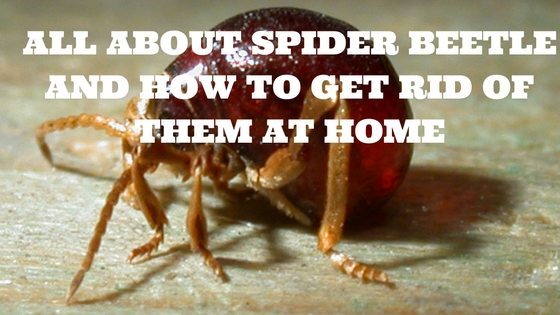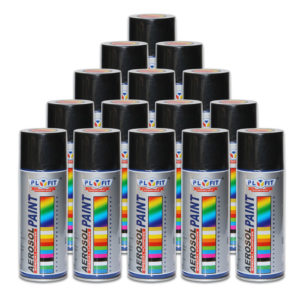All About Spider Beetle and How To get Rid Of Them At Home

Dealing with pests in your home can be daunting. There’s the embarrassing aspect of the whole ordeal, in wondering whether something you’ve done or haven’t cleaned is the reason for the infestation. Then there’s the practical aspect of having to find an exterminator who can get the job done fast enough that you won’t have to worry about things like food infestation and the like.
One of the more pernicious pests to deal with out there is the spider beetle. This little creature is deceptive, as it has long legs and a round body. For this reason, it’s commonly mistaken as a spider. And if people don’t think it’s a spider, then there’s just as much of a chance that they’ll see it as a bed bug instead.
However, it’s important to understand that this is a pest in a class of its own. In this article, we’re going to take a look at what exactly spider beetles are as well as what you can do to get rid of them in your home. In the process, we hope to clear up some of the mystery surrounding these little creatures.
Contents
Spider beetle facts.
As we mentioned before, these beetles are unfortunately mistaken for spiders which is why they’ve been given their name. Another case of mistaken identity is when people take them for bed bugs. In fact, there are several different varieties of this beetle, such as the whitemarked beetle, the American beetle, and the smooth beetle.
These beetles aren’t as common as others, but if you do have them then they’ll tend to congregate around places where you store food, such as your pantry or cupboards.
Spider beetle bites.
It’s lucky that these beetles don’t actually bite humans. However, what they lack in this capacity they more than make up for in others. They’ll eat anything from wool to animal droppings, even hair and dried food products.
Infestations.
Each of the species of these beetles have pretty much identical life cycles. They’ll reproduce on or on animals, food, hair, paper products, fabric, and wood. These are just some of the places that spider beetles have been found in the past.
In late spring and early summer, the female spider beetles will lay up to 120 eggs in a three to four week period. These eggs can be found in places like leaves or stored food. It takes up to a month for the eggs to hatch into larvae, and this stage can last anywhere between five and eight months before they reach pupation.
This all lasts up to one month. Their whole cycle takes up to a year to complete. Once they’ve reached adulthood, spider beetles will live up to a year.
Spider beetles aren’t too selective when it comes to the environment that they choose. They can be very active in cooler climates, even those that happen to be below freezing. Even so, reproduction tends to work best in environments that are humid and warm. If these conditions do continue during the mating season, then up to two generations can be spawned during a single season.
While spider beetles do look like bed bugs ande spiders, they’re not actually dangerous at all toward humans. Instead, they’re more of a nuisance to deal with. If there is an infestation, they’ll tend to congregate somewhere like your pantry. They’ll more often than not be found in grains, dried fruits, spices, and cereals. They can also be seen stuffed animals, wood, and upholstered furniture. While they tend to congregate around food, they might be breeding in a wall or up in an attic.
Types of spider beetles.
American and smooth beetle identification.
Both the smooth and American beetle are very similar in size and shape. They range from 1.5 to 3.5 millimeters in size. The body of both of these beetles is either a shiny black or a dark reddish-brown. The American beetle has a head, thorax, antennae, and legs covered in a type of yellow-colored hair. Smooth spider beetles, on the other hand, have the same dark color all over their body, which makes them look like a mite at times.
Whitemarked beetle identification.
The whitemarked beetle is characterized by its patches of white hair that go across its wings. The old beetles tend to lose this white coloration with age, however. The rest of the body has a light brown appearance, and these spider beetles can range from 2 to 4.3 millimeters in length. Males stand apart from females with their longer and thinner abdomens.
Spider beetles in the house and the garden.
These spider beetles tend to come out at night in order to feed on whatever you have available. Unless you stay up late, there’s a good chance that you might not even be aware of an infestation. If there are damp spaces in your home or spoiled foods, you might want to be on the lookout for spider beetles.
How do I get rid of spider beetles?
The best way that you can counter a possible infestation of spider beetles is to keep your house clean. Get rid of any old or spoiled food. Try to keep new foods in air-tight containers so that they can’t get in. Clean and sweep areas where food is handled. While this might not solve your problem altogether, it should discourage most spider beetles from congregating.
Dealing with pests can be a pretty tricky thing to do. First, you have to find the infestation, then identify the species, and figure out how to cut off their food supply and nesting capabilities. While this list isn’t exhaustive, it shoud give you a good idea as to how to do just that and be comfortable in your house knowing that you don’t have to worry about these pervasive pests. So if you think you might have a beetle infestation, it’s best for you to strike while the iron i hot and get to work.
Non Toxic Spray

This non-toxic spray kills larvae, eggs, and adult insects by breaking down their exoskeleton. It is safe to spray around the home and works only on the insects. Feel good about spraying indoors around pets, plants and children.
All Natural Non Toxic Insect Killer Spray by Killer Green
